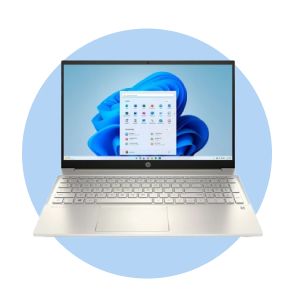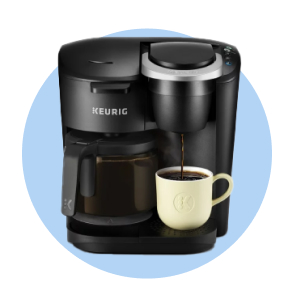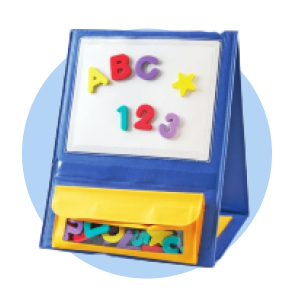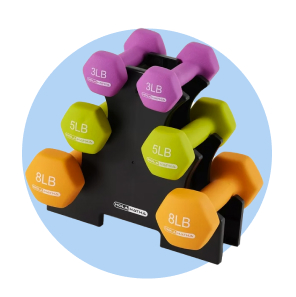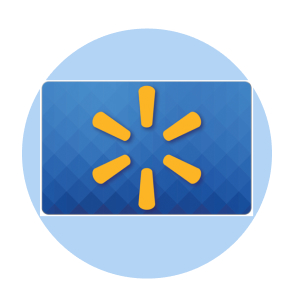
Small Business Finance: 5 Things to Consider
Tool, techniques and advice
As the owner of a small business, chances are you wear a lot of hats. From negotiating with clients to managing payroll, all of the major decisions come down to you. You need the right tools to help you manage the most important aspects of running a business.
At Walmart Business, we know that managing your finances is important for the health of your organization. That’s why we’ve assembled the following list of tools and tips that can help you keep your finances under control.

1. Small business finance tools
When it comes to small business finance tools, we’re living in a time of abundance. The challenge isn’t so much finding a helpful finance tool as it is choosing the right one from among the myriad options available.
Here are some features to consider:
- Intuitive interface: Some tools are advanced but have interfaces that make it hard to find what you need. Look for a tool with a clean, easy-to-use interface that will help you get set up and working quickly.
- Robust integrations: In order for a financial tool to get the data it needs, it will have to work with your other systems. Be sure that the software you choose can integrate with the other tools you use to manage your business.
- Outstanding customer support: No matter how good a tool is, sometimes you’ll need help with it. Check reviews and write-ups to find a tool with a great reputation for customer support.
With those features in mind, here are some of the types of tools you can use to help manage your business’s budget.
- Accounting software: Accounting software helps to create a comprehensive picture of your business’s finances. This will be especially helpful at tax time, so be sure to look for tools that either offer tax solutions or integrate with the tax solution of your choice. Key features of accounting software include automated data importing, intuitive organizing structures and relevant reporting.
- Payroll management: Payroll is one of the more complicated financial tasks you will perform. From keeping banking information straight to withholding the proper amount for taxes, there’s a lot to keep track of. Look for these features from your payroll management tool: scheduled direct deposits, automated tax processing, time tracking and an employee-facing platform.
- Expense tracking: Your expenses are a significant contributor to the money flowing out of your business. It’s important to track them carefully, especially if you plan to itemize them come tax season. Features to look for in expense tracking tools are optical character recognition (OCR), intelligent receipt processing and the availability of a mobile app.
For more tools and features to look for, read 5 Small Business Budgeting Tools to Try.

2. Office expenses vs. supplies
While we’re on the topic of tracking expenses, it’s important to know the difference between expenses and supplies. Keeping them separated will help you when it comes to tax season.
Here’s a quick cheat sheet:
Office expenses: This category refers to big-ticket items required for running a workspace, like web hosting and phone lines. It also includes payroll, rent and utilities. Capital outlays like office furniture and computers also count as expenses.
Office supplies: Office supplies are typically consumable items you need to restock regularly. Examples include paper, pens, coffee and toner or ink cartridges for your printer.
For more tips on how to tell expenses from supplies, read Office Expenses vs. Supplies: What’s the Difference?

3. Business expense tracker
If you plan to track your business expenses, whether for tax purposes or simply to gain a better understanding of the health of your business, there is software that can help. Here are some features to look for when it comes to business expense software:
- Intuitive interface: Just as with any other finance tool, the ease of use of an expense tracker is paramount. You (or your team) will be less likely to use it if it’s a hassle.
- Invoice creation: Creating an invoice by hand is needlessly time-consuming. A tracker with a built-in invoicing feature makes it faster and easier. Plus, some trackers come with an option to enable digital payment directly from the invoice.
- Automatic expense categorization: Having a well-organized expense report makes identifying where your money is going easier and will save you time when doing your taxes. Look for an expense tracker that can automatically sort expensed items into separate categories.
- Strong security: Your financial information is sensitive information. If you’re going to be entering expenses and bank account details into a piece of software, you will want to ensure it is as secure as possible. Look for features like data encryption, password-protected logins and multifactor authentication (MFA).
For more features to look for in expense tracking software, read 7 Things to Look For in a Business Expense Tracker.
4. Finance software
When you run a small business, you have a lot on your plate. Managing your business’s finances can take time you’d probably rather be spending doing other things. Business finance software can help you get that time back.
Here are the features to look for when shopping for business finance software:
- Planning and reporting: Software that helps you gain a top-down view of the health of your business is key. Look for features like detailed and up-to-date reports, charts and graphs to help you visualize trends and the ability to set financial goals like loan repayments.
- Automated bookkeeping: Automating tedious tasks is another way to gain back time better spent growing your business. Automation features to keep an eye out for include the ability to automatically sort and categorize transactions and popular invoices and other financial documents with information from an existing database.
- Inventory and e-commerce integration: Keeping an up-to-date inventory is crucial to ensuring you have a clear picture of the health of your business. Finance software with inventory tracking keeps you from having to manually move numbers from one tool to the next, saving both time and money.
- Tax assistance: Taxes are a fact of life, and when running a small business, managing your tax returns can be costly and time-consuming. Finance software with built-in tax assistance will help you prepare your taxes more quickly. Even if you plan to hire a professional, having organized files to hand them will save you money.
To learn more about finance software for your small business, read What Finance Software Do You Need for Your Small Business?

5. Small business financial tips
With a whole business to run, it might seem like tracking the ins and outs of spending and expense reporting is taking you away from what your business is all about, but having a healthy balance sheet can be a crucial part of running any business.
Here are some tips for monitoring your finances, maintaining a positive cash flow and staying on the right side of regulations.
- Track your cash flow: Money goes out to payroll, bills, expenses and buying supplies. Money comes back in through paid invoices. Ensuring that the bottom line of both of those categories matches up will help you from running into financial trouble. Positive cash flow means you have more money coming in than going out, which equals a healthy business. Negative cash flow is the opposite—you’re spending more than you’re making.
- Establish a billing strategy: Waiting around for invoices to get paid can create cash flow problems. Setting clear standards for when you expect payments and communicating those standards to your clients can help you get paid on time. Also, consider accepting payments electronically to make it easier for your clients to settle up.
- Choose an accounting method: When it comes time to file taxes, the government will want to know which method you used for accounting: cash or accrual. Cash accounting is more straightforward, as it tracks money coming in when it arrives and money going out when you pay it, but it lacks the depth of the accrual method. Accrual accounting takes expected payments and expenses into consideration, allowing you to plan more accurately for the future. The accrual method is also preferred by many lenders.
For more tips for managing your business finances, read Small Business Financial Tips: 5 Ways to Save More & Stress Less.
Save money with Walmart Business
Running a business means paying attention to a lot of different things all at once. Let us take one of those things off your plate by simplifying your shopping and stocking with Walmart Business. We have thousands of items at everyday low prices so you can keep your business supplied without breaking the bank.
And if you’re a member of Walmart Business+, you’ll receive free shipping on orders of any size,1 earn 2% in Walmart Business Rewards on orders of $250 or more,2 enable repeat ordering to save time when ordering things you use the most and be able to analyze your spending patterns with Spend Analytics. To learn more about how Walmart Business+ can save you time, money and hassle, visit our website.


Limited-time offer
Unlock your special promo code
Stay informed on Walmart Business news & get $20 off a $100 purchase!1
1Minimum order of $100. Promo code can be used one time & may not be combined with other offers. Offer not transferable & void where prohibited by law. Customer responsible for all applicable taxes. Offer expires 12/31/2025 at 11:59pm PT. Further restrictions apply. See terms at checkout for details. Promo code offers available in limited quantities. While supplies last.
1Excludes most Marketplace items, freight and certain location surcharges.
2Exclusions apply. See full terms for details.
Exciting news awaits
Hear firsthand about new products, features & promotions.
By clicking submit, you agree to receive emails about Walmart Business and acknowledge you have read and agreed to our Terms of use and Privacy Policy.




